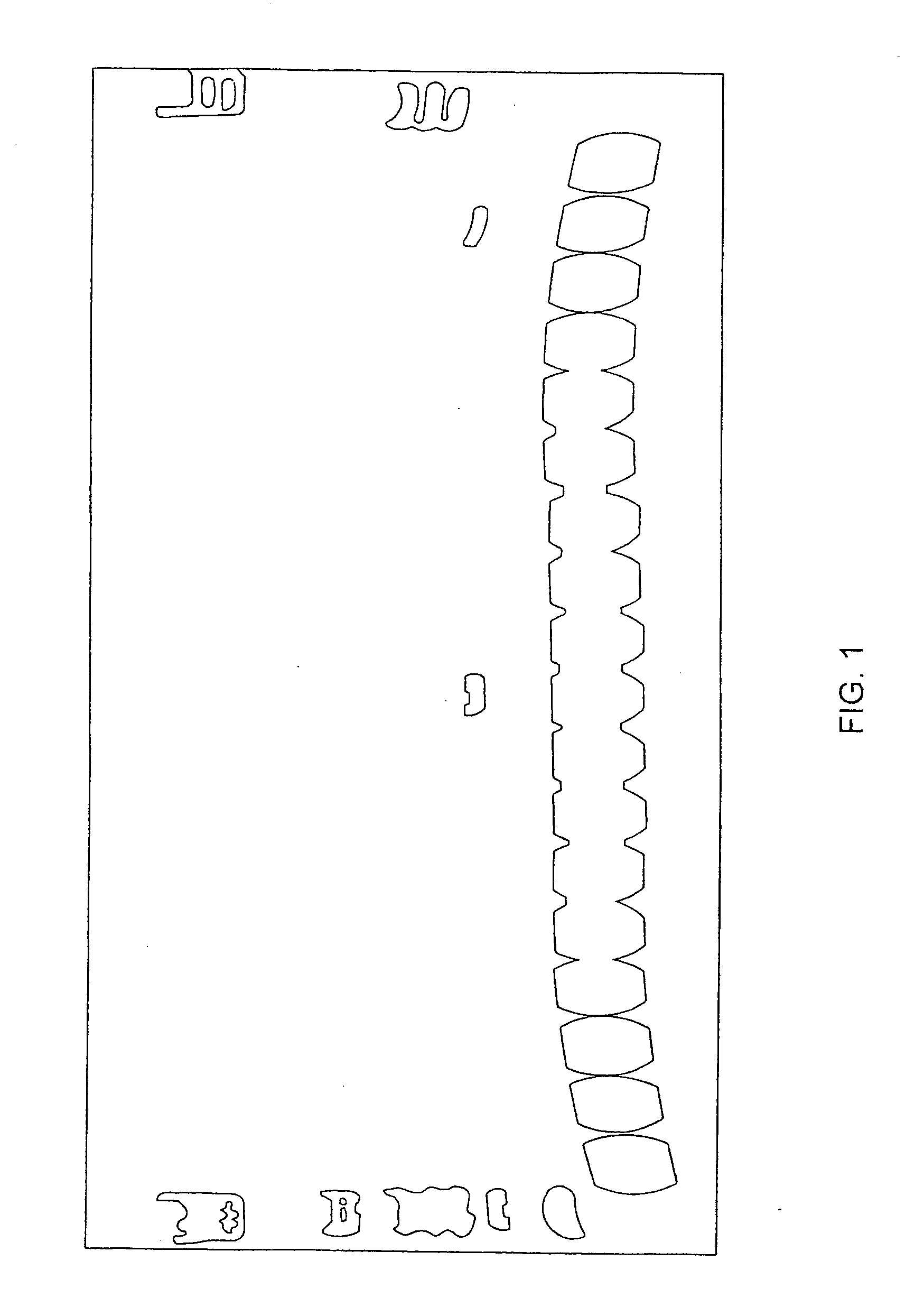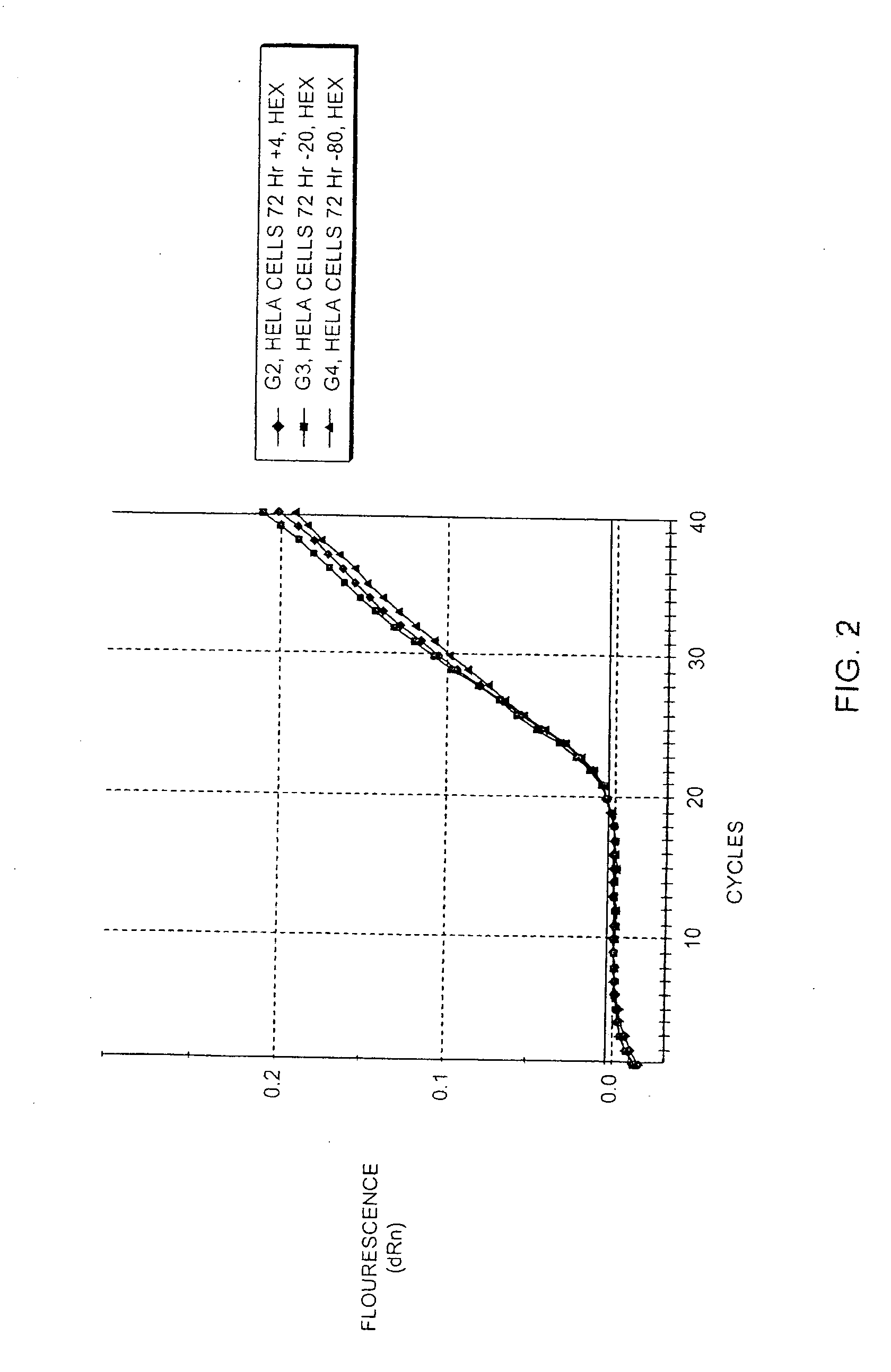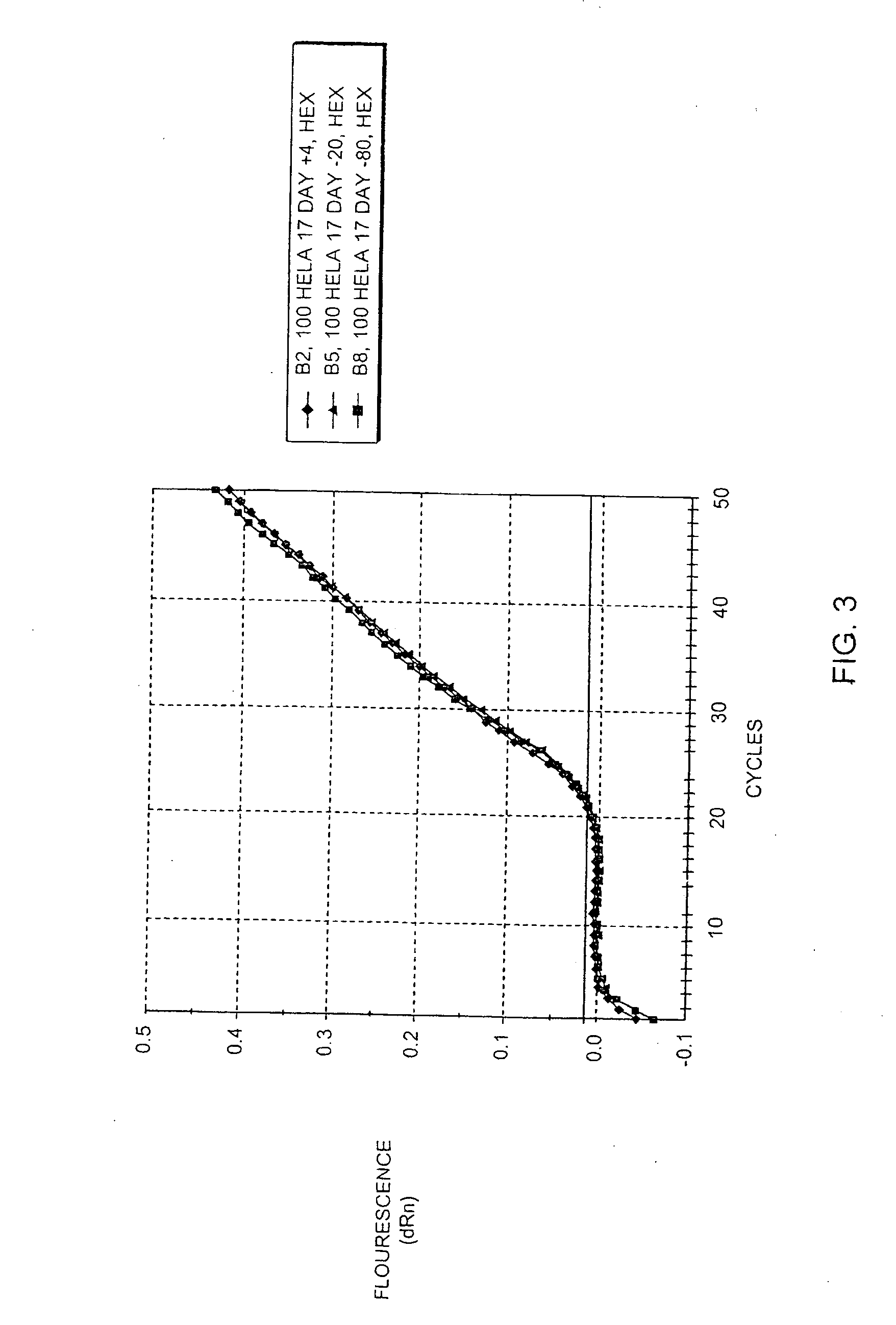Lysis and stabilization buffer suitable for inclusion in PCR reactions
a lysis and stabilization buffer technology, applied in the field of molecular biology, can solve the problems of not being disclosed as suitable for any further purpose, reference does not approach the use of such buffers in lysing cells, and its usefulness in nucleic acid amplification reactions, etc., to achieve rapid lysis of cells and allow long-term storage of cell lysates
- Summary
- Abstract
- Description
- Claims
- Application Information
AI Technical Summary
Benefits of technology
Problems solved by technology
Method used
Image
Examples
example 1
Preparation of a Buffer of the Invention
[0111] A composition comprising Tris(2-carboxyethyl)phospine (TCEP; MW 286) and Triton X-100 was made for use in further examples. 0.038 g TCEP was dissolved into 26 ml of RNase-free water. To this, 50 ul of 0.5 M HCl was added to adjust the pH to 2.5. To the TCEP solution, 260 ul of 100% Triton X-100 was added, and the final solution mixed until a homogeneous solution was obtained. The final solution comprised 5 mM TCEP and 1% Triton X-100 at a pH of 2.5. The composition was stored at 4° C. until use.
example 2
[0112] Jurkat cells were grown in RPMI medium in accordance with standard cell culture techniques. The culture was split 2:1 into new RPMI medium, and 2 hours later, cells were resuspended in PBS at a concentration of 1,00,000 cells per ml. 100 ul of cells were aliquotted into new tubes and centrifuged at 1000×g for 5 minutes to pellet the cells. The PBS was aspirated and 100 ul of lysis buffer from Example 1 was added. The cells were lysed by vortexing for 1 minute, then placed on ice or stored at 4° C. or frozen (−20° C. or −80° C.) until use. To test whether heating is required to inactivate enzymes present in the composition (which it is not), the cell lysate was heated at 65° C. for 10 minutes.
example 3
cDNA Synthesis
[0113] cDNA was synthesized from RNA present in the cell lysate generated in Example 2 using the StrataScript® First Strand Synthesis kit from Stratagene, as follows: To 28 ul of lysate, 1 ul of either water or control RNA (1.8 ng / ul), and 3 ul of random primers (100 ng / ul) were added and thoroughly mixed. The mixture was incubated at 70° C. for 5 minutes, then cooled to room temperature for 10 minutes. Meanwhile, a cocktail of the following reagents was made: 4 ul of the first strand buffer, 1 ul of RNase Block (40 U / ul), 2 ul of 100 mM dNTPs, and 1 ul of StrataScript® RT (200 U / ul) or 1 ul water (for a no RT control reaction).
[0114] The 8 ul cocktail was added to the 32 ul cell lysate, and the reaction mixture incubated at 42° C. for one hour for cDNA first strand synthesis. The reaction mixture was then incubated at 90° C. for 5 minutes to inactivate the RT.
[0115] The first strand synthesis mixture was stored at 4° C. until use, or, alternatively, used immediate...
PUM
| Property | Measurement | Unit |
|---|---|---|
| temperature | aaaaa | aaaaa |
| temperature | aaaaa | aaaaa |
| pH | aaaaa | aaaaa |
Abstract
Description
Claims
Application Information
 Login to View More
Login to View More - R&D
- Intellectual Property
- Life Sciences
- Materials
- Tech Scout
- Unparalleled Data Quality
- Higher Quality Content
- 60% Fewer Hallucinations
Browse by: Latest US Patents, China's latest patents, Technical Efficacy Thesaurus, Application Domain, Technology Topic, Popular Technical Reports.
© 2025 PatSnap. All rights reserved.Legal|Privacy policy|Modern Slavery Act Transparency Statement|Sitemap|About US| Contact US: help@patsnap.com



